This sign means:
Side road.
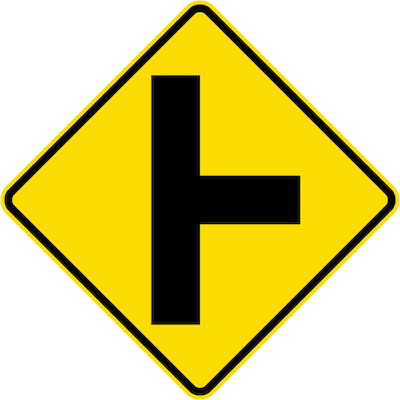
Pennant-shaped signs indicate:
No passing zones.
A “No stopping” sign means that, unless directed to do so by a police officer, you may stop only:
To avoid conflict with other traffic.
A diamond-shaped sign is a:
Road hazard sign.
Drivers under the age of 21 who are operating on a probationary license should display ____ on their license plate.
Two GDL decals
Your blind spot is the area of the road:
You cannot see without moving your head.
This sign means:
U-turns are prohibited.
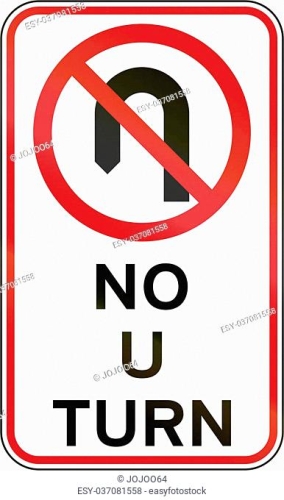
What can you do to avoid the need to make emergency stops while driving in traffic?
Look ahead and maintain a safe following distance.
This sign means:
One-way traffic.
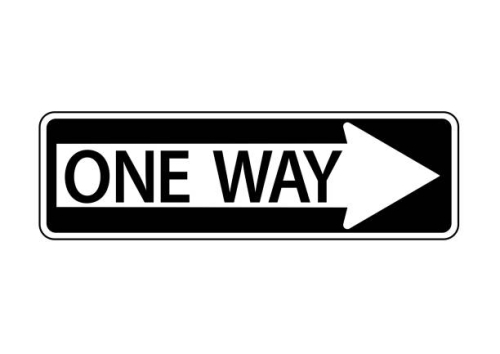
This road sign means:
The road ahead turns sharply right, then left.
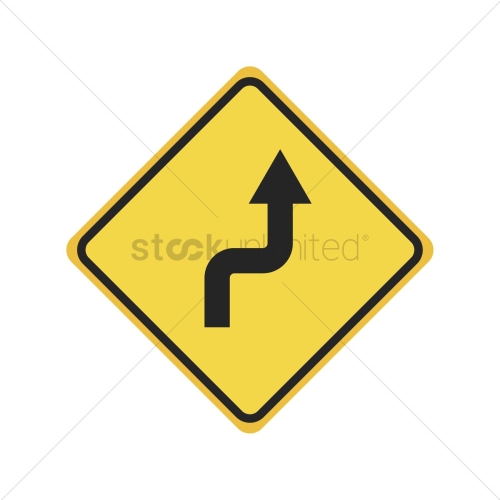
When you are being tailgated:
Move over to the right, if there is an open lane to your right.
If there is not an open lane to your right, wait until the way is clear ahead and reduce your speed slowly to encourage the tailgater to drive around you.
Never slow down abruptly.
If you are driving behind a school bus and it shows a flashing red light signaling a stop, you must:
Stop at least 25 feet away.
This sign means:
Lane ends.

A driver should be extra alert to motorcyclists, bicyclists, and pedestrians because:
They’re difficult to see in traffic.
This sign means:
Divided highway ends.
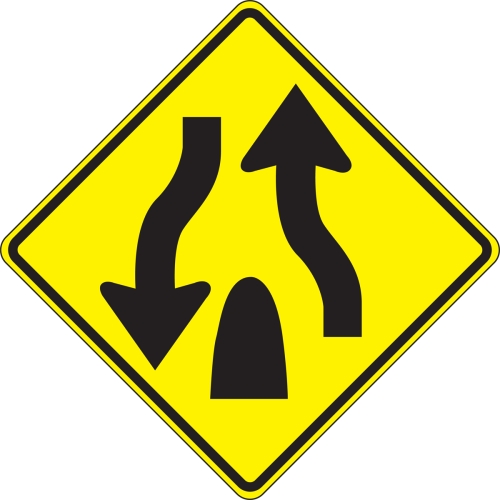
When a traffic signal light turns green, you should:
Yield the right-of-way to pedestrians.
This sign means:
Slippery when wet.
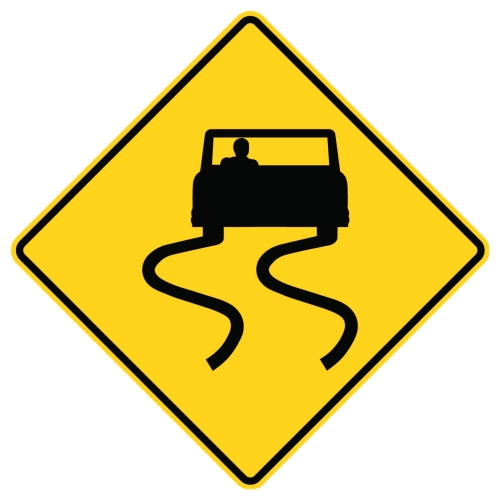
This road sign means:
Winding road.
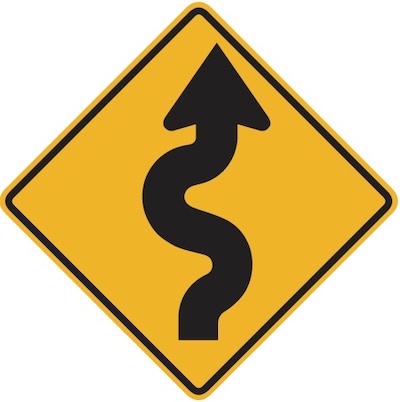
When turning or changing lanes, you must:
Always signal your intentions, even when no visible traffic is present.
Which of the following statements about railroad crossings is true?
It is against the law to go around lowered gates at a crossing.
You must stop at a railroad crossing when directed to do so by a flagger.
Not all railroad crossings are equipped with flashing red signals and gates.
This road sign means:
Right turns are not permitted.
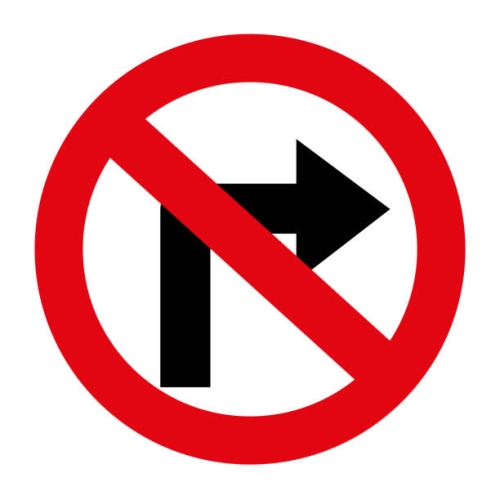
You are involved in an accident and your vehicle is blocking traffic. You should:
Move your vehicle off the traveled portion of the roadway, if possible.
When riding in a vehicle, small children:
Must never be allowed to ride while standing in the vehicle.
This sign means:
Slippery when wet.
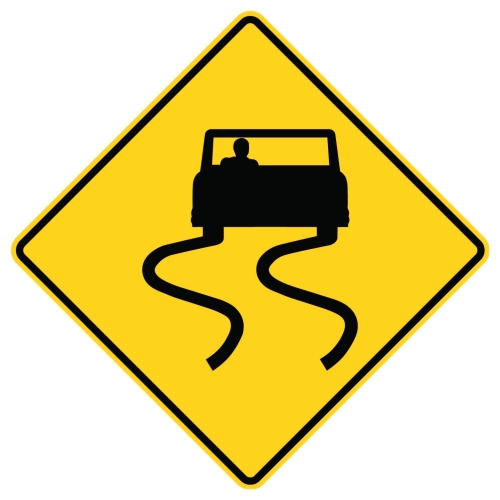
You may avoid a traffic signal by driving on public or private property:
If an officer directs you to do so.
Your body gets rid of approximately:
One alcoholic drink an hour.
An intersection has no traffic signs or signals. You arrive at the same time as a vehicle to your right. You should:
Slow down and yield to the vehicle on your right.
When driving on slippery roads, you should:
Increase your following distance.
This road sign means:
The overpass ahead has a low clearance.
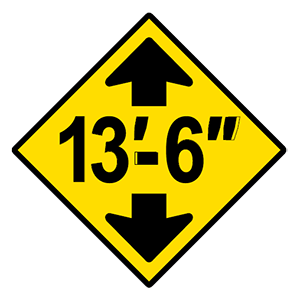
Regulatory signs:
Indicate what a driver must or must not do.
What should you do if your vehicle’s right wheels leave the pavement?
Take your foot off the accelerator, slow down, then ease back onto the road when it is safe to do so.
You must not drive your vehicle at a speed greater than:
The maximum speed limit.
A speed that is faster than is reasonable and prudent.
A speed that is safe for existing conditions.
Road rage and aggressive driving may be reduced by:
Allowing extra travel time.
Obeying posted speed limits.
Using proper turn signals.
You experience an incident at work that has left you feeling angry. When you get to your car, you should:
Take a few minutes to cool off before you begin your drive home.
You are driving when your power steering stops working. You should:
Work hard to steer, reduce your speed, drive to a safe area, and stop.
If you stop along the road at night:
Turn on your emergency flashers and leave your low beams turned on.




